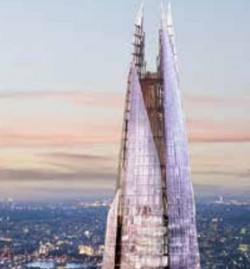Those who are shaping our city skylines congregated at 99 City Road London, at the Tall Buildings Conference in April to provide unique insights into the engineering feats that are creating a legacy of iconic superstructures that are transforming the built environment. Over 300 delegates gathered to learn from industry pioneers on how to build high-rise better, addressing the complexities of transferring engineering principles from low-rise to high-rise structures to deliver the UK's most prestigious projects, and offsite construction techniques featured prominently throughout.
Offsite Magazine was on hand to capture the salient points from the day. The morning session was chaired by Lara Kinneir, Director of New London Architecture (NLA), who has a multidisciplinary design and strategy background, having worked in architectural and urban design practices, academia and local government. With an interest in applying an in-depth understanding of the processes required to deliver positive urban change – Lara kicked off the event with findings from the NLA's annual London Tall Building Survey detailing the increase in the number of proposals, particularly outside the City boundaries.
Keynote speaker Steve Watts, Chairman of the Council on Tall Buildings & Urban Habitat and Partner at Alinea Consulting – took the audience on a journey, taking in mega-structures from across the globe. Opening with a quote from 2001 by Urban Theorist, James Howard Kunstler: 'We are convinced that the age of skyscrapers is at an end. It must now be considered an experimental building typology that has failed.' Steve took an in-depth and at times a satirical look, encompassing innovation, economics, demand, values, competition, incentives and egos! Through iconic imagery Steve Watts, compare city skylines from across the world a decade ago and how they look today. In his case study presentation Albert Williamson-Taylor, Director at AKTII shared - the technical innovation involved in One Park Drive.

Part of the Wood Wharf Development for Canary Wharf Group, this 58-storey tower will stand approximately 205m tall, providing quality residential space with amenities such as a gym, pool and lobby on the lower three floors. The site is located within the old dock, so the tower is constrained only by a new Cofferdam that forms the boundary. The substructure consists of 1.8m- diameter piles, with a higher frequency of 1.5m-diameter beneath the core, founded in the Thanet sands at depth. The 2.5m-deep raft extends beyond the retaining wall that forms part of the double-storey basement wall. The structural concept adopted for the tower superstructure typically consists of reinforced concrete flat slabs supported by reinforced concrete blade walls and columns.
The afternoon session was chaired by Darren Richards, Managing Director of the offsite experts, Cogent Consulting, said of the event: "This is a wonderfully inspiring sector – brimming with innovation that is born out of necessity to solve some incredible engineering and construction process challenges. It is great to see offsite construction technology and techniques featuring so prominently in many of the projects covered." Christian Bocci, Senior Partner at Weston Williamson + Partners, posed the question: Is London ready for its first mile high building? In his address Christian explored innovative typologies for tall buildings and possible sites for a mile-high tower. He also examined what a tower of this enormity might mean in terms of jobs, homes, trade and place shaping design.
London's skyline is changing, and he considered the tall buildings that are no longer confined to the Square Mile – instead are a key part of the new polycentric city. Christian explored how this migration from the centre brings new challenges and opportunities. Pressure on the urban realm requires new thinking in public space design, public transport connectivity and new technologies that will unlock innovative tall building typologies offering myriad high-quality spaces for Londoners. So, is London ready for its first mile high building?
A tough question which somewhat divided the audience. The 2019 Tall Buildings Conference highlighted design and building technology innovation in the highrise sector – facilitating learning and knowledge transfer and provided the platform for much discussion and debate. Following the great success of this inaugural event, the Tall Buildings Conference will be back in 2020.
A 'Call for Papers' will run through to the end of November and proposals can be submitted via the website. For more information visit: www.tallbuildingsconference.co.uk









